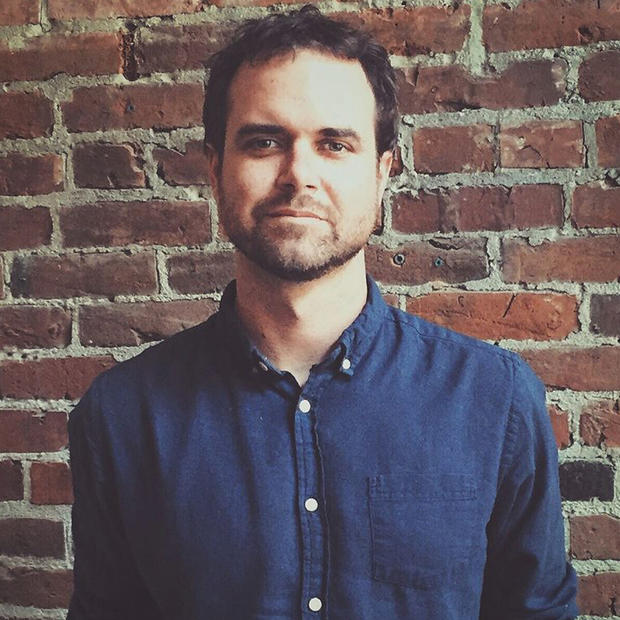When it comes to climate change, scientific models suggest that the Pacific Northwest will get off relatively easy. Some have even suggested that the region will see a population boom, as “climate refugees” make their way to region to escape droughts, unbearable heat, flooding and other conditions.
But while climate change's impacts aren't predicted to be extreme west of the Cascade Mountains – especially relative to parts of Eastern Washington, California and the Midwest – the area won’t be unscathed, according to a new report from the University of Washington.
The study, produced by UW’s Climate Impacts Group, aims to provide the most comprehensive look to date at the impacts of warming weather on the region stretching from Olympia to Canada, compiling research papers, agency reports, and many other relevant data.
“It’s a synthesis of science,” says lead author and research scientist Guillaume Mauger. He says the report provides “a single resource for people to look at what’s coming and think about how to adapt.”
The scope of the study is enormous, ranging from predicted changes to water quality, to landslide frequency, to agricultural output. Mauger claims a study of its depth never would've been possible a decade ago, the last time UW attempted such a compilation.
Among its projections, the report presents an overview of climate change’s deleterious effects on human health. Here are five of the report’s key findings on the subject:
1) Puget Sound may need to rethink its aversion to air conditioning
Unlike the frequently parched citizens of Eastern Washington, Puget Sound residents are not accustomed to serious heat, Mauger says. That’s a problem, as the average temperature in the region is expected to rise by 2.9 to 5.4 degrees Fahrenheit by the 2050s.
That may not seem like much, but emergency medical calls in King County increase by 16 percent on extreme hot days, according to the study. The death rate increases by 6 percent for those over 65, and by an alarming 18 percent for those over 85. As the temperature creeps up further, those numbers may rise as well.
Mauger says Puget Sound citizens may be more susceptible to health problems on these days than their counterparts in Eastern Washington. While hesitant to speculate exactly why that is, he says two theories seem plausible: One is that people in the area don’t have the proper “habits that go along with how you live on really hot days."
The other, as Crosscut’s Ben Anderstone has noted, is that Seattle has the least amount of air conditioning of any major city other than San Francisco. And that city has average summer temperatures significantly lower than Seattle.
2) The region may start earning its reputation for rain
As any longtime resident will tell you, the rumors of constant rainfall in the Puget Sound have been greatly exaggerated. The area enjoys a constant state of grey overcast gloom during certain seasons instead, with less overall precipitation than cities like Houston.

But the uncommonly heavy rains of recent years are a sign of things to come, says the study. The intensity of heavy rain events is expected to rise by 22 percent by the 2080s, which will lead to flooding, as well as conditions for health-threatening mold growth.
Floods may not pose serious threats to human life – only 14 flood-related deaths have occurred in Washington since 1995, out of 1,455 nationwide – but as the study details, heavy rains can also contribute to landslides.
3) Less drinking water = more bacteria
While we could see more flooding during certain times of year, the overall forecast looks drier. Increased temperatures, decreased rainfall in the summer, and low snowpack in the mountains during the winter could negatively impact the amount and quality of drinking water in the state. Urban areas could face more water restrictions like the ones we saw last summer. Water systems that rely on wells, meanwhile, will become more vulnerable as bacteria and chemicals become more concentrated.
4) Wildfires affect rural and urban areas alike
As devastating wildfires burned through Washington this year – particularly the Okanogan Complex in the north-central part of the state – Puget Sound was often enveloped in a thin haze. With increased wildfire activity predicted as the climate warms, this could become a regular occurrence. That may lead to regular spikes in respiratory problems from air pollutants in areas like Seattle and Tacoma, and far worse in counties where the fires burn.

5) Seasonal affective disorder: It’s not just for winter anymore
Finally, the study dedicates some space to the people who get bummed out by the weather in Puget Sound. Their ranks may grow, and may be inspired by seasons beyond our gloomy winters.
To make matters worse, the study points out that with increased flooding, extreme rain, heat, fire and other problems, the “possible mental health effects of climate change include: post-traumatic stress disorder and unhealthy coping mechanisms (e.g., increased alcohol or tobacco use, poor dietary habits); non-trauma related anxiety and depression related to feelings of losing control over a situation, or uncertainty about the future; and grief over the loss, or potential loss, of culturally important resources, traditions, or places. These effects would disproportionately affect vulnerable populations and individuals with pre-existing mental conditions.”
What’s to be done about it all? Mauger hopes this study will get a conversation started, and inspire researchers to fill in some of the many gaps in our knowledge. He also hopes the study will inspire agencies like the Department of Health to make more of their research data available, and will be a resource as they plan for the future.
“This report overall is intended to be used by policy makers and planners,” says Mauger. Still, he’s hesitant to tell policy makers and agencies what to do: “We’re trying to be policy informative, not prescriptive.”


